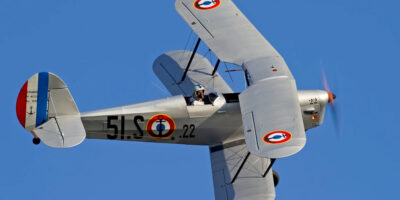Fate is ever the unreliable bedfellow, so as the first flight of my diesel creeps ever closer, now might not be the best time to mention I’ve only suffered three engine failures, thus far… One was in a twin which didn’t really fly on one (landed downwind but didn’t break the aeroplane), another where I experienced such an horrendous misfire and decided a large field was the best option, and another where I finished upside down in a potato field. Thought I’d pulled off a dead stick greaser… until the nosewheel sank into the soft earth.
On the other hand, given that I’m about to embark upon a test programme of an untried engine, thinking about such things is probably good preparation. When the popping and banging started, I had been loath to touch the mag switch for my Moth Minor’s smaller Gipsy, just in case it disturbed something and the fusillade turned to silence. At least the engine was still producing some power and that certainly stretched the glide until a suitable field appeared. It was only when safe on terra firma that turning the mag switch to ‘one’ made the engine run smoothly. The Minor has a double magneto in one casing and turning off one set of windings obviously stopped the scatter within. A flick of a switch decided whether I was too cautious and could have flown home on one, or sensible because I chose a field when I found one. The other was in a Cessna 182.
I was scud-running at about 900ft on a grey January day when the Continental coughed, then stopped. I pulled the carb heat, swapped the fuel tanks, and looked for a suitable field among a forest of pylons. About 50ft up, and lined up with what seemed like the only option, the engine started. If it stopped again, I’d lose the landing option and at 50ft, any control of the situation. I switched off the mags… If it had been carb ice though, I could just have flown away, feeling lucky. And if I hadn’t started at 900ft, I’d have seen the large, firm stubble field on the other side of the plot… If you’ve never had a real engine failure, I can tell you it’s not like in your training. There is absolutely no time, and an aeroplane which seems to glide so nicely with the throttle pulled back, comes down like a brick.
So, would I change anything with the benefit of hindsight? My sensible head says maybe the Gipsy’s mag switch, but at 50ft in the Cessna, probably not. At 500ft, then possibly, but I’d need to remember that the penalty would remain the same and I did walk away from both incidents. It’s all part of the reason why accident reports make compelling reading, and the fact that most of us can relate to the ingredients which brought about a worse situation.
“The pilot opened the canopy, undid his belts, and leant forward over the nose”
But, what of those reports where a genius pilot made the right decision in the most difficult circumstances… There are many, but I have a couple of favourites. The first is courtesy of Alex Henshaw, author, record setter, test pilot, a man possessed of flying skills that most of us can only dream about. One of his wartime jobs was to test fly the Spitfires that rolled off the Castle Bromwich production line (he flew some 2,500 in all, plus about 300 Lancasters), and a job he insisted on doing whatever the weather, with absolutely no guarantee all would go to plan. Henshaw lost many of his fellow testers to accidents rather than the Luftwaffe and it’s only when you read his book Sigh for a Merlin you see how many of the damn things blew up while he was sitting behind them. And when they did, there was no radar, no ILS or VORs, not even an NDB (remember them?). Instead, the column of steam from Hams Hall power station, which always made a hump in the clag cloaking a winter’s day, had to serve as an impromptu marker for countless dead stick approaches. Any of them is a compelling account. If you haven’t read Sigh for a Merlin, you should.
The second is an unnamed amateur aviator. He was flying a Rutan Canard – probably a Long-Eze, or maybe a three/four seat Cozy – when for whatever reason, the aircraft entered a deep stall. This is a condition peculiar to canard aircraft and it happens when the main wing stalls, and the front one (the canard) doesn’t have enough authority to lower the nose and unstall it. It’s why the CofG is critical in a canard layout. The aircraft was level, but going down at about 500fpm, a rate which promised a very bad ending. The pilot opened the canopy, undid his belts, and leant forward over the nose. That moved the CofG forward, the nose came down, the main wing unstalled and he flew on, I’m guessing to a cold beer, or maybe two. Followed – I’m also guessing – by some attention to the weight and balance of his aeroplane.
Amateur he might well have been, but more than smart enough to stay alive. The more of this stuff I read, the better prepared I feel…
Working vintage aircraft and cars make Mark particularly happy.
[email protected]







